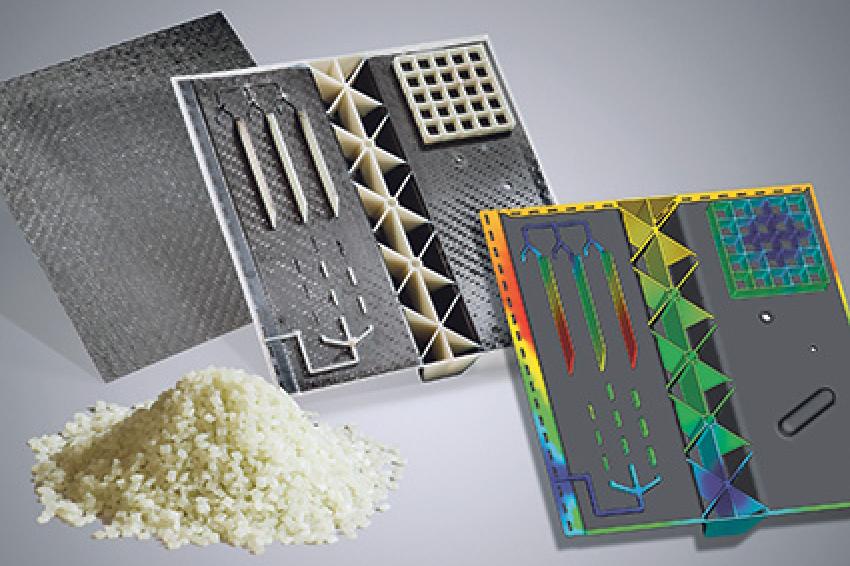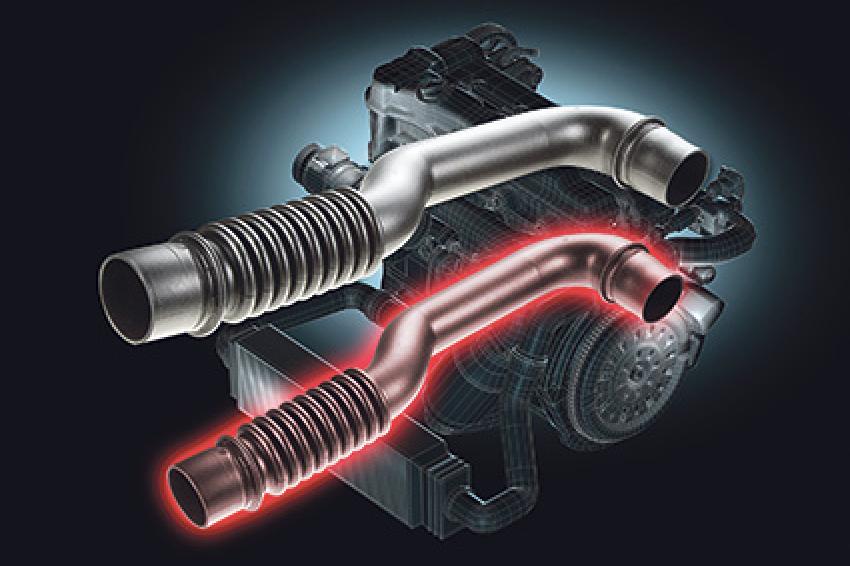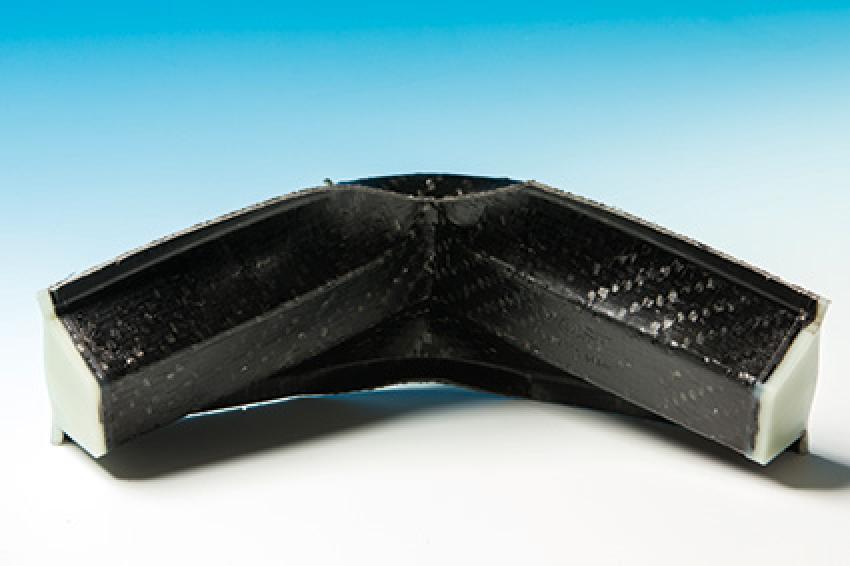BASF Enters Market of Composite Semi-Finished Parts for Automotive Sector
30.01.2014 -
New Ways to Lighten Up - Saving weight in the automotive sector is still a major topic in resource conservation. Established glass-fiber-reinforced thermoplastic materials such as polyamide and polybutylene terephthalate (PBT), which can be processed as granulate by means of injection molding, are gradually reaching their limits. Composites such as thermoplastic laminates and tapes offer new approaches (Fig. 1).
Thermoplastics, with both short and long fiber reinforcement, have made a major contribution to lightweight materials: Innumerable metal production components have been replaced by equally capable plastic counterparts. Especially for the high thermic loads, which plastics in exhaust gas recirculation are subjected to, BASF presented the particularly heat-resistant Ultramid Endure for the first time in 2010. To date, this is the most heat-resistant, polyamide-based injection-molding material available.
Now BASF is introducing a blow-molding grade of Ultramid Endure, which closes the gap of efficiently manufacturing pipes in the charge-air duct of vehicles by blow molding (Fig. 2). Nevertheless, in the meantime, these plastic components and materials are starting to reach fundamental limits.
The next big advance in metal substitution in vehicle construction - especially in body and chassis components - will succeed only with a technological leap, namely, using continuous-fiber reinforcement of injection molded structures, i.e., with thermoplastic composites. In this context and starting in October, BASF expands its activities in the field of engineering thermoplastics and will offer a product and service package called Ultracom.
New Line of Semi-Finished Laminate and Tape Products
This package includes three components: continuous fiber-reinforced semi-finished products, adapted overmolding compounds and the complementing engineering support. The key innovations in this new approach are laminates based on woven fabrics and unidirectional (UD) tapes (Fig. 3).
The second component consists of overmolding materials from the Ultramid (PA) product line that have been developed specifically for use with these laminates and tapes. With these fabrics, it is possible to injection-mold complex parts that have very high mechanical reinforcement. The continuous fibers will be placed at precisely defined locations while simultaneously specific functions are incorporated as the result of overmolding.
Threefold Service: Simulation, Process Support and Component Testing
The third component of the Ultracom package covers the extensive engineering support provided by the BASF application-engineering group. This includes not only assistance in the form of designing the part on a computer with the aid of the universal simulation instrument Ultrasim, but also support when processing the material, manufacturing the part, and testing its final properties (Fig. 4). For the purpose of part manufacturing, BASF has built a fully automated pilot line combining an injection molding system with automated laminate feeding at its technical center.
Since March, this equipment has been used to produce multifunctional composite test specimens by means of the in-mold forming/overmolding process, to gain expertise and provide optimum support for customers. This process represents the most promising approach for production of structural components from laminates and injection molding compounds.
Material, Process and Part Development with CIFO
To explore all aspects of composite part design with this new production cell, the company has also developed its own test part: The so-called CIFO part (derived from "combination of in-mold forming and overmolding") is a multifunctional test specimen for investigating and jointly developing continuous-fiber-reinforced composite parts for volume production (Fig. 1).
Short Cycle Time through Simultaneity
The process sequence in the new composite manufacturing cell with a six-axis robot as central element offers a high degree of simultaneity for the shortest possible cycle time. This means that three clamping frames for laminate handling are used simultaneously in the cell. Numerous trials have demonstrated that cycle times of one minute can be achieved with this manufacturing facility, the equivalent of a standard injection molding process. Thus, a major prerequisite for use of the process in high volume production is satisfied (Fig. 5).
Composite Design with Ultrasim
The capabilities of the Ultrasim simulation tool have also been expanded: The behavior of components made from thermoplastic laminates with woven glass-fiber fabrics or tapes and overmolded short glass-fiber-filled polyamide can be calculated and predicted reliably with integrative simulation methods.
This component of the Ultracom package, the engineering support, is not just an option that can be used when necessary, as in previous lightweight projects: It is an essential component of all customer projects. Without the ability to optimize design and production and to describe the behavior of the composite materials and the parts numerically via integrative simulation - as in the case of the conventional short and long fiber-reinforced thermoplastics - a successful full-scale market launch would be difficult.
Optimum interaction of application development with simulation, processing technology and a testing laboratory under one roof ensures assistance for the customer throughout the entire process chain: from material characterization to high-volume parts production. In this way, composite parts can be developed in a joint effort and a highly efficient manner.
Best Of Two Worlds
The greatest technological obstacle now is the development and introduction of highly automated and robust process technologies at all partners along the value-added chain, which will also lower the process costs. Integrated systems consisting of injection molding machines, molds, automatic positioning equipment and heating structures are not available off the shelf; neither are the individual elements matched to one another. When they become available, thermoplastic composite parts reinforced with continuous fibers will, in the near future, provide the best possible combination of weight savings, cost efficiency and performance for body and chassis components.
Time Is Short
Working together with customers in the automotive sector, the experts at BASF are giving themselves three years to develop production concepts for thermoplastic composites with continuous-fiber reinforcement for body and chassis parts. All partners in the industry must build up know-how together to develop the materials, the process technology and the market. BASF intends to spend a high two-digit million euro sum on research and development in its composite activities in the next three years.
Some customer projects are already ongoing. BASF is ready to contribute expertise in the formulation and processing of engineering thermoplastic and thermoplastic-impregnated fiber fabrics to further customer projects.









